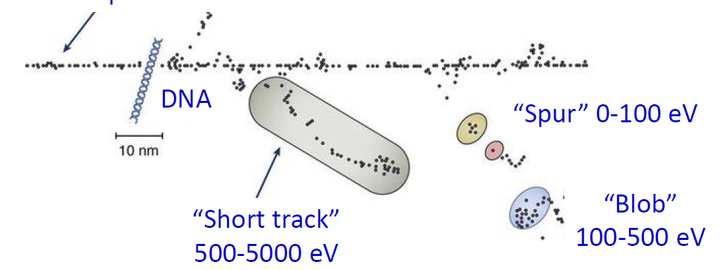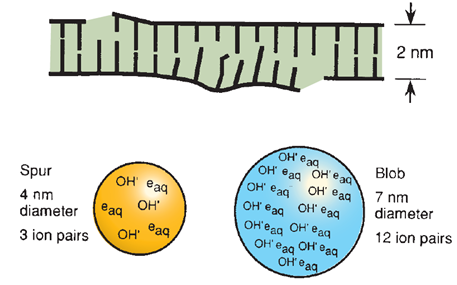Radiation energy deposition [with exercise questions]

Radiation Energy Deposition
The energy from ionizing radiations is not deposited uniformly in the absorbing medium but is located along the tracks of the charged particles set in motion—electrons in the case of X- or gamma-rays, protons, and alpha-particles in the case of neutrons. Radiation chemists speak in terms of “spurs,” “blobs,” and “short tracks.” There is, of course, a full spectrum of energy event sizes, and it is quite arbitrary to divide them into just three categories, but it turns out to be instructive. A spur contains up to 100 eV of energy and involves, on average, three ion pairs. In the case of X- or gamma-rays, 95% of the energy deposition events are spurs, which have a diameter of about 4 nm, which is about twice the diameter of the DNA double helix. Blobs are much less frequent for X- or gamma-rays; they have a diameter of about 7 nm and contain on average about 12 ion pairs with an energy range of 100–500 eV.

This page has been viewed times.